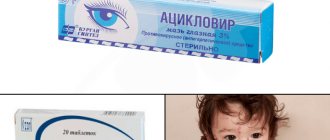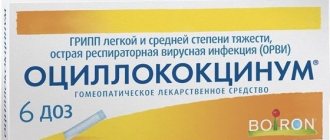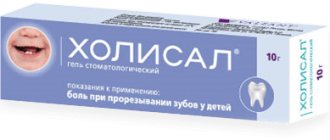X-ray examination is recognized as the most informative and widespread in various pathologies throughout the world. The Alpha Health Center clinic provides a wide range of RG diagnostics to young patients.
Despite the reliability of the technique, x-rays are always prescribed to a child very carefully. Research using RG should always be justified, and radiation exposure should be strictly dosed. When prescribing an x-ray for a small child, Alpha Health Center specialists always weigh the possible benefits of the study against the harm.
When prescribing x-rays for children in Moscow, doctors first of all take into account the relevance of the information that will be obtained during the examination. The possibility of conducting another type of diagnosis, for example, ultrasound or MRI, is also taken into account. And only in the absence of an alternative examination is RG prescribed.
In what cases is it necessary to perform x-rays on children:
- If a fracture is suspected;
- If you suspect the development of pneumonia;
- In the presence of developmental anomalies;
- When swallowing foreign bodies;
- If you suspect sinusitis.
The Alpha Health Center clinic performs both radiography, that is, obtaining a static image, and radiography, which is a study of the function of an organ in dynamics.
Our clinic has several branches throughout Russia, so our administrators will always tell you where to get an X-ray for a child and make an appointment with a pediatric surgeon. All our branches are united by:
- Professionalism of medical staff who know how and love to work with children. You will not have to redo the pictures just because the child was actively moving, crying and did not obey the doctor;
- Modern equipment designed specifically for children’s x-rays;
- The conclusion is written by specialists who are competent and highly qualified directly in the field of children's healthcare.
Use of X-rays in pediatrics
Radiography is a study of bones and some internal organs (performed using a contrast agent), which is carried out by projecting X-rays onto a special matrix. Allows you to assess the integrity of bones, their deformation, and damage to joints. An X-ray is usually performed in two or more projections to obtain complete information about the patient's condition.
This research method is used in all branches of medicine, including dentistry, pulmonology, traumatology, and surgery. It is used to diagnose complex fractures, dislocations, pathologies of bone development, as well as such serious diseases as pneumonia and tuberculosis. This research method is also required in pediatrics. Children's x-rays are used to determine changes in tissues, diagnose various injuries, and acute lung diseases.
In what cases are x-rays prescribed for children?
In pediatrics, x-rays are used in the following cases:
- for dislocations, joint dysplasia, fractures and cracks of bones;
- for diagnosing head injuries, congenital pathology of the development of skull bones, asymmetry of the facial bones;
- if you suspect osteoporosis;
- if you suspect pathology of the heart and lungs (pneumonia, tuberculosis, tumors);
- for diagnosing developmental anomalies of the bladder, kidneys and ureters (the study is carried out using a contrast agent);
- when foreign and radiopaque objects enter the body.
Is it possible to do x-rays for children in dentistry? Here, this type of research is used in the following cases:
- for chronic periodontitis;
- for differentiation of tooth germs;
- before processing the channels.
Since the dose of x-rays in dentistry is small, the doctor may often prescribe such procedures to examine the child. This will not cause significant harm to the growing organism.
Indications for X-ray examination in children
The need for an X-ray examination for children is assessed by a specialist in each individual case. If it is possible to make a diagnosis without conducting this type of study, then the doctor will not do it. In other cases, the benefit of making a correct diagnosis outweighs the possible harm to the baby from the x-ray. No matter how much a specialist visually examines a child, injuries to the head and skull, hip joints or teeth require detailed study, determining the nature of the changes and their topic (exact place, location). Examinations will have to be done in the following cases:
- A child's chest X-ray is performed if pneumonia is suspected, if there are rib fractures, or for possible changes in the spine. Mass X-ray examination - fluorography is not carried out for children under 18 years of age. To detect tuberculosis, skin tests are performed and only if they change, the doctor can refer for an additional examination of the chest.
- An examination of the jaw and baby teeth is carried out in case of detection of pulpitis or exacerbation of periodontitis, “non-eruption of teeth”, in order to see whether their rudiments are present. X-rays of teeth and jaw tissue are also necessary when the dentist makes a decision about the advisability of its treatment or removal.
- An examination of the abdominal cavity is carried out if there is a suspicion of a swallowed foreign object, as well as if there is a suspicion of intestinal obstruction.
- An X-ray of the hip joints is carried out if there are problems with the musculoskeletal system, as well as if dysplasia of these joints is suspected.
- Emergency X-rays of the skull are performed for traumatic brain injuries, as well as for suspected brain tumors. In case of sinusitis in children, examination of the head and skull is not justified, since the anatomical features of the structure of the maxillary sinuses do not allow seeing a reliable picture in the image at an early age.
Every parent, having received a referral for an x-ray for a child, thinks about how harmful it is for children and what is the permissible dose of radiation, but failure to provide assistance in the absence of reliable data harms the health and threatens the life of the baby much more than a small dose of x-rays.
Exposure to X-ray radiation on a child
Parents sending their children for such a procedure need to know the dangers of x-rays for a child.
It should be remembered that with a one-time procedure and the use of protective equipment, the impact of X-radiation on the child’s body will be minimal. In most cases it will not have any negative impact. Parents will only need to monitor the child’s condition after the procedure. Negative consequences of X-ray irradiation can be observed in children who undergo similar diagnostics more than 5-6 times a year due to existing diseases. How dangerous is x-ray for a child in this case? This issue must be discussed with the attending physician, since the study can cause the development of various disorders in the growing body, including blood diseases (leukemia, thrombocytopenia, erythrocytopenia), malignant degeneration of cells.
The harm of x-rays to the child is not always immediately apparent after the examination, especially if it was carried out for health reasons in the first trimester of pregnancy in the mother. In some cases, the consequences can make themselves felt after a few years, manifesting themselves as anomalies in the development of certain organs and systems, the formation of tumors, and disruption of hematopoietic processes. Sometimes x-rays pose a danger not to the patient himself, but to his future children (the reason for this is gene mutations).
Separately, we need to talk about whether X-rays are harmful to a child under one year old. At this age, the human body is more susceptible to various types of radiation. They can lead to changes in the morphological structure of cells, cause gene mutations that will affect the next generation, and also lead to the formation of malignant tumors. For this reason, children under one year of age are prescribed x-rays only as a last resort.
Knowing whether x-rays are dangerous for a baby, the child’s parents can independently decide whether to conduct such a diagnosis. It is important for them to ensure that all safety measures are observed when performing this procedure and, if possible, to discuss with the doctor the use of more gentle research methods.
At what age can a child have x-rays?
If there are acute indications for such a diagnosis (signs of pneumonia, congenital defects, bone fractures, dislocations and subluxations of joints, in preparation for surgery), X-rays are taken for children of any age. For preventive purposes, such a study can be prescribed to a child from 15 years of age. Once a year, from this age, a child is allowed to have a chest x-ray.
In most cases, patients under the age of fifteen years are prescribed other, more gentle diagnostic techniques (ultrasound, MRI) to minimize the effect of X-radiation on the body.
What pathologies can a children's x-ray reveal?
The following diseases can be detected using radiography:
- Pneumonia, bronchitis.
- Diseases of the cardiovascular system, including congenital heart defects.
- Pathologies of the gastrointestinal tract.
- Diseases of the urinary system.
- Tuberculosis.
- Pathological changes in bone tissue (rickets, osteoporosis, osteomyelitis).
- Abscesses in internal organs.
- Dislocations and broken bones.
- Concussion.
- Cerebral palsy.
For preventive purposes, it is recommended to do fluorography for children after 14 years of age, as well as after a fall or bruises, in order to exclude pathologies that are dangerous to health and life.
How to do x-rays for children
The procedure for X-ray diagnostics depends on the age of the child and the area of study. If we are talking about emergency examination for injuries, parents need to know, for example, how a child is given a chest x-ray. The sequence is as follows:
- Clothes and metal objects in the area where the image is taken are removed from the small patient (to avoid distortion). All other areas of the body are covered with protective pads.
- The child is immobilized. If a child under 7 years of age is examined in this way, parents are asked to hold him during the procedure. If the child is older, the rules for performing x-ray diagnostics are explained to him and he is asked not to move during the image.
- After taking an image in several projections, the patient is allowed to get dressed and leave the X-ray room.
If the procedure needs to be carried out using a contrast agent (for example, when examining the kidneys or intestines), parents are explained how X-rays with contrast affect the child. Children are prescribed a special diet and cleansing enemas at night and in the morning before the procedure. This helps reduce gas production in the intestines, which can distort the image.
Before diagnostics using contrast, children are given an allergy test with a drug.
On the day of the procedure, the child is injected with a contrast agent, after which an image is taken according to the standard procedure and the diagnostic data is sent for interpretation.
How to reduce the negative impact on a child’s body
To reduce the negative impact of x-rays on the child’s body, the following measures should be taken:
- examine the child in those medical institutions that use modern equipment that takes children's X-rays using minimal doses of radiation;
- Make sure that the child does not move while taking the photo. In this case, the picture will be clear the first time, and the examination will not have to be repeated;
- use protective aprons and pads made of lead coated with lead rubber.
It should be remembered that the order of application of protective pads depends on the age of the child and the area of the body examined. If diagnostics are prescribed for a child under 3 years of age, protective pads are used to cover his entire body, except for the area being examined.
For example, if an X-ray of a child's chest is performed, the patient's abdomen, face, arms and legs are covered with pads. For older children, overlays and skirts cover the abdominal area and genital organs.
In dentistry, X-ray examinations can be carried out without the use of onlays, since devices with a narrow radiation beam and short radiation duration are used. The radiation dose for such a diagnosis is considered harmless to the child.
Repeated x-ray for the child in 2 weeks... is it worth it???
In general, my situation has already been described here and not even in one post... a little background
We are ill…
It’s been a long time and already nerve-wracking (and let WORD highlight this word in red for me, it’s nerve-killing).
We've been sick since December 21st. Small snot, terrible dry cough - the verdict is tracheitis.
On December 30, due to an incessant dry cough without a hint of turning into a wet one, I ran to the general clinic and immunoglobulin E. Wheezing and whistling can be heard even without a phonendoscope, and even more so with it. And the doctor’s verdict is tracheobronchitis!!! Prescribed: Klacid, Berodual and Pulmicort inhalations, as obstruction has developed. At home I understand that the child is worse. Cough non-stop, dry and painful. 2 hours after the pediatrician, I run with the child to the pulmonologist. Verdict tracheobronchitis with obstruction. The treatment is similar + Viferon suppositories and Miramistin in the nose. Referral for x-ray. I rush across the city for an x-ray. I beg the radiologist to see us at least for a fee. There is no inflammation in the lungs! Ugh! home.
By evening we are getting worse. To be more precise, he is no worse, but his cough is tormenting. In between coughs he plays. Although the attacks are strong and frequent. Coughs silently and cannot clear the throat. An ambulance arrives. The verdict is just a sore throat!!! give me milk and butter! I set up an ambulance and do inhalation...
December 31st - in the afternoon I call an ambulance, because we all have no strength left and it’s quite scary to live at home with such bronchospasms. We arrive at the emergency room. DOESN'T COUGH!!! Never! But the doctors in the waiting room, of course, listen to me with understanding and suggest hospitalization. When asked what the treatment will be - the same as at home, when the tests will be done - January 6th. The question was what to do there on December 31st, they smiled sweetly and sent me home...
January 01 3 a.m.-am. The fireworks died down. We call an ambulance because the cough is strong again. We're leaving for the reception area. Repeat daytime conversation and no cough. We're going home…
The cough seemed to be turning into a wet cough and coughing up against the background of ambroxol.
January 3, 2 pm - temperature rises sharply - 39.5 - cold legs/arms. I'm calling an ambulance. An injection and we are taken away. The temperature dropped and did not rise again. And all this against the background of an antibiotic. With an infection, we are in a ward with a girl who was brought in later than us with a persistent fever and cough.
We lie down... do our inhalations, drink our syrups and antibiotics... Why are we lying there??? Oh yes... there was also an incomprehensible rash. It appears and then disappears. I’m guilty of using syrup, but I’m subconsciously afraid... that’s why I’m lying there... I go to the doctor with a request to start an IV. I hope it helps remove the allergen. I get “Why torture a child?” Different doctors may or may not have wheezing...
Why are we lying???
On the 3rd day, I realized that our neighbor’s mother had clearly caught the virus from her daughter, she was sneezing and snot and coughing. This fills me with indescribable fear. What else did I expect from an infectious disease???
I pack my bags and leave with my signature... The cough is neither better nor worse. All the same. At night, the whole family doesn’t sleep, we cough a lot and it’s very scary... But at least we can ventilate the house, give it something to drink, play, etc.
After 4 days, I was about to get ready for work, but in the evening the temperature was again 39.5 and I had a runny nose. The cough seemed to have turned dry again...
In total, our temperature has been maintained with varying degrees of success for the 4th day now. It goes down, and in the evening it rises again. Last night they knocked him down before going to bed, and then at night they warmed the child, since the temperature was 35.5.
On the first day of fever, I called the local police officer. The verdict is a repeat virus. We continue inhalations with pulmicort and give injections with ceftriaxone.
bl....
I’ve already had 3 injections, but I still have a fever.
But that's not even the point. I ask, what if it’s pneumonia, maybe a repeat x-ray. Answer: “There is no need to irradiate the child. You still get treatment like you would for pneumonia.” But sorry, for pneumonia, injections are given 2 times a day, but we are prescribed 1 time a day.
In short, I tired everyone... Tomorrow I’m going to donate blood and a smear for whooping cough. It is painfully similar to us. And the attacks, and it turns out that it is with whooping cough that the attacks are blocked in the cough center, when the emphasis shifts to the center of another profile, for example, overexcitation. That is, clearly. The cough is severe, I call an ambulance, we go to the emergency room - the child is stressed - he does not cough!!! The truth is somewhere near…
So during this time I have a lot of diagnoses and assumptions. It is confusing that the obstruction does not go away. I'm afraid it's pneumonia, since my temperature has risen again. ALTHOUGH... and snot appeared... also confused... after all, it’s clearly a virus...
So the question is... Would you take another x-ray of your child in 2 weeks? Or we listened to our doctor’s opinion not to irradiate, so we treat it like pneumonia... although it’s still not like that... what if we don’t cure it, we don’t see it, we don’t stop it in time...
Afraid…
How often can a child be x-rayed?
How many times a year can a child be x-rayed? The total number of procedures for a patient under 15 years of age is determined depending on the radiation exposure standard established by the Ministry of Health of the Russian Federation. The maximum radiation dose per year for a child should be no more than 3 millisieverts (mSv). It can be obtained in 5-6 procedures per year, carried out using special equipment using personal protective equipment.
In exceptional cases (in the presence of severe illnesses, fractures, dislocations), the doctor may neglect the number of recommended x-ray sessions. It determines how many times a child can be x-rayed, taking into account the existing indications and the risks to the life of the little patient.
Contraindications to X-raying a child
Once again, it must be emphasized that x-rays for young children are prescribed according to the order of the Ministry of Health of the Russian Federation only for certain indications. Mass preventive X-ray examinations are prohibited. Otherwise, the contraindications for both children’s and adults’ x-rays are common:
- Some thyroid diseases;
- Some liver and kidney diseases;
- Blood diseases;
- Active tuberculosis;
- Severe heart pathology.
Before X-ray examination (for some types of RG), testing of individual sensitivity to iodine is mandatory.
If you have previously taken an x-ray of your child, it is advisable to have the results with you - this will help us correctly track the dynamics of the changes that have occurred. We guarantee high quality diagnostics, attentive attitude of a specialist to your problem, fast processing of results and affordable prices for x-rays.
conclusions
X-ray is an informative diagnostic method used in pediatrics. It allows you to identify congenital pathologies of the body’s development and various injuries. A child can undergo such diagnostics, if necessary, 5-6 times a year. To reduce the harmful effects of radiation on a child’s body and eliminate the negative consequences of X-rays in children, doctors use protective aprons and pads, and also conduct similar studies using modern X-ray machines that have minimal radiation doses.










